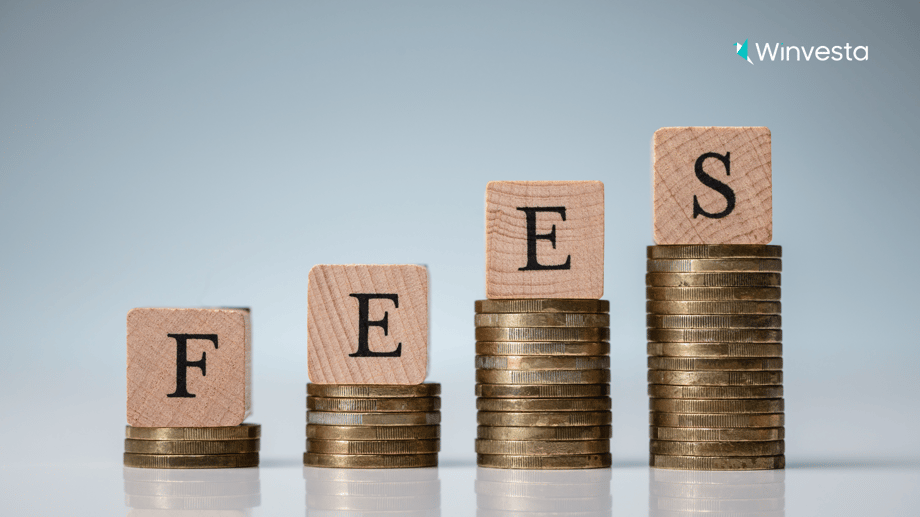Contents
Foreign Transaction Fee vs Currency Conversion Fee
6 minutes read
06 April 2025

Ever checked your bank statement after an international purchase, only to find mysterious fees eating into your money? You're not alone. Hidden charges in money exchange often catch people off guard, with two main culprits: foreign transaction fees and currency conversion fees. These charges might seem similar, but they can impact your wallet in different ways.
Understanding the difference between currency exchange fees could save you significant money on your international transactions. Whether you're shopping online from foreign websites, travelling abroad, or sending money to family overseas, these fees affect how much foreign currency actually reaches its destination. The good news? You can avoid many of these charges once you know how they work.
Let's explore what sets these fees apart and discover practical ways to keep more money in your pocket when dealing with international transactions.
Understanding the fee landscape
The landscape of international payments is more complex than it appears on the surface. Recent research shows that small businesses lost nearly INR 67,504.36 million in hidden fees during international transfers in 2023 alone.
What triggers these international charges
Your international transactions can trigger fees in various situations:
- Retail purchases outside your home country
- Online shopping from foreign websites
- ATM withdrawals abroad
- Transactions where the point-of-sale is linked to overseas accounts
- Digital wallet payments in foreign currency
How banks calculate these fees
Banks typically structure their fees as a percentage of the transaction amount, ranging from 1% to 3%. The calculation often involves two components: the card network fee (usually 1%) and the card issuer's markup. For instance, if you spend INR 84,380.45 abroad, you might pay up to INR 2,531.41 in foreign transaction fees alone.
Hidden costs in cross-border payments
The complexity of international payments often masks several hidden costs. A striking 82% of businesses either don't believe their bank is transparent about cross-border payment costs or aren't sure. These hidden charges can include exchange rate markups (typically 2-5% of the transaction amount), intermediary bank fees (INR 1,265.71 – 2,531.41), and maintenance fees.
The timing of your transfer can significantly impact costs, as foreign exchange rates fluctuate constantly. Traditional money transfer methods often involve multiple intermediary banks, each adding its own fees and delays. This creates what experts call an "iceberg effect" - where visible fees are just the tip, while larger hidden costs lurk beneath the surface.
.png?width=1600&height=900&name=Foreign%20Transaction%20vs%20Currency%20Conversion%20Fee%20(1).png)
Breaking down foreign transaction fees
When making international transactions, understanding the components of foreign transaction fees can help you make smarter financial decisions. Let's break down these charges to see exactly what you're paying for.
Bank processing charges explained
Your card issuer typically charges between 2% to 3% of each transaction value. This fee covers the cost of processing international payments and managing currency risk. For example, if you spend INR 10,000 abroad, your bank might charge up to INR 300 as their processing fee.
Card network fees unraveled
Major card networks like Visa and Mastercard add their own layer of charges:
- Network processing fee: 1% of transaction value
- Currency conversion handling: Built into the network fee
- Security and authorisation costs: Included in the base fee
Regional variations in fee structures
Fee structures vary significantly across regions. In the United States, charges typically combine percentage and fixed amounts (0.05% + $0.21), while European transactions usually involve straight percentage fees ranging from 0.02 EUR to 2.25%.
The total cost of your international transaction can reach up to 3.5% when combining both bank and network charges. However, some card issuers, particularly those offering travel-focused cards, absorb these fees to provide better value for frequent international travellers.
Remember that these fees apply not just to overseas purchases but also to online transactions with foreign merchants or when your payment passes through an international bank.
Decoding currency conversion fees
Understanding currency conversion fees requires looking beyond the surface of your international transactions. When you exchange money across borders, several layers of charges can affect your final amount.
Exchange rate markups
Your bank or payment provider typically adds a markup to the mid-market exchange rate. This markup usually ranges from 1-3% of the transaction amount. For instance, when converting currencies, card networks like Visa and Mastercard charge a standard 1% fee to the card issuer, who may then pass this cost to you along with additional charges.
Dynamic currency conversion traps
Dynamic Currency Conversion (DCC) might seem convenient, but it often comes with significant costs:
- Markups ranging from 2.6% to 12% above market rates
- Immediate display of home currency amount
- Additional fees on top of regular foreign transaction charges
- Poor exchange rates compared to standard bank conversions
Third-party conversion services
Alternative currency conversion options through third-party providers often offer more competitive rates. These services typically use the mid-market rate as a baseline, though some may add their own markup. Recent studies show Americans lost approximately INR 489.41 billion to exchange rate markups in 2023, highlighting the importance of choosing the right conversion service.
Remember that while merchants must obtain your consent for DCC, they're not required to disclose their markup above the market rate. Always check the current exchange rate before accepting any currency conversion option.
.png?width=1600&height=900&name=Copy%20of%20Blog%20images%20(15).png)
Smart strategies to minimise fees
Smart money management starts with strategic planning for international transfers. Here's how to minimise troublesome fees while maximising your currency exchange value.
Choosing the right payment method
Select specialised payment platforms that offer competitive rates compared to traditional banks. These platforms typically charge below 1% for major currencies, whereas banks often add a markup of 4-6% to the mid-market rate. Consider opening a multi-currency account to handle regular international transactions, as this can help you avoid repeated conversion fees.
Timing your transactions
Strategic timing can significantly impact your transfer costs. Here's when to schedule your transfers:
- Mid-month periods show lower fees compared to month-end rushes
- Weekday transfers often process faster than weekend transactions
- Early morning transfers (before bank cut-off times) ensure same-day processing
Leveraging fintech solutions
Modern financial technology offers smarter ways to manage your money exchange needs. Fintech platforms process about 45% of transfers instantly, compared to traditional banks' 3-5 day processing time. These solutions often provide real-time exchange rates and transparent fee structures, helping you make informed decisions about when and how to transfer money.
For large transfers, consider using forward contracts to lock in favourable exchange rates for future transactions. This strategy can protect you against currency fluctuations and help you budget more effectively for international payments.
Comparison table
| Aspect | Foreign Transaction Fees | Currency Conversion Fees |
| Typical Fee Range | 2-3% of transaction value | 1-3% markup on exchange rate |
| Primary Components | - Bank processing fee (2-3%) - Card network fee (1%) |
- Exchange rate markup - Dynamic Currency Conversion (DCC) charges |
| What Triggers the Fee | - Retail purchases abroad - Foreign website purchases - International ATM withdrawals - Overseas point-of-sale transactions |
- Currency exchange transactions - DCC services at point of sale |
| Processing Entities | - Card issuer - Card networks (Visa/Mastercard) |
- Banks - Merchants - Third-party conversion services |
| Additional Charges | Security and authorisation costs | DCC markups (2.6-12% above market rates) |
| Regional Variations | - US: Percentage + fixed amount - Europe: Straight percentage (0.02-2.25%) |
Varies by service provider and region |
| Total Potential Cost | Up to 3.5% of transaction value | Up to 12% above market rates with DCC |
- Card network fee (1%) | - Exchange rate markup
- Dynamic Currency Conversion (DCC) charges | | What Triggers the Fee | - Retail purchases abroad
- Foreign website purchases
- International ATM withdrawals
- Overseas point-of-sale transactions | - Currency exchange transactions
- DCC services at point of sale | | Processing Entities | - Card issuer
- Card networks (Visa/Mastercard) | - Banks
- Merchants
- Third-party conversion services | | Additional Charges | Security and authorisation costs | DCC markups (2.6-12% above market rates) | | Regional Variations | - US: Percentage + fixed amount
- Europe: Straight percentage (0.02-2.25%) | Varies by the service provider and region | | Total Potential Cost | Up to 3.5% of transaction value | Up to 12% above market rates with DCC |

Small financial savings lead to big wins for your business!
- Collect from 130+ countries.
- Local USD, GBP, CAD, EUR accounts.
- Free FIRA
Final note
Money exchange fees can significantly affect your international transactions, but knowledge helps you make smarter choices. Foreign transaction fees typically cost you 2-3% through bank and card network charges, while currency conversion fees can reach up to 12% when using services like Dynamic Currency Conversion.
Smart planning helps you reduce these costs. Pick specialised payment platforms for better rates, schedule transfers during mid-month periods, and consider multi-currency accounts for regular international dealings. Modern fintech solutions offer faster processing times and clearer fee structures compared to traditional banks.
Your choice between foreign transaction and currency conversion fees depends on your specific needs. Regular travellers might benefit from cards that waive foreign transaction fees, while occasional international shoppers could save money by avoiding Dynamic Currency Conversion and choosing bank-rate conversions instead.
Remember that small fee differences add up over time. Watch exchange rates, compare service providers, and pick the right payment method for each situation. These simple steps will help you keep more money in your pocket during international transactions.
Frequently asked questions about foreign transaction fees vs currency conversion fees
- Use cards that offer zero foreign transaction fees
- Pay in local currency instead of accepting DCC
- Consider multi-currency accounts for frequent transactions
- Time your exchanges during bank hours for better rates
Disclaimer: The information provided in this article is for educational purposes only and should not be considered financial advice. Exchange rates, fees, and financial products may change over time. Always consult with a qualified financial advisor or your bank before making international transactions or financial decisions.
.png?width=1772&height=364&name=Testimonial%20Card%20-%20Murad%20Currawalla%20(1).png)

Contributed by Denila Lobo
Denila is a content writer at Winvesta. She crafts clear, concise content on international payments, helping freelancers and businesses easily navigate global financial solutions.



![Client vs customer: Why smart businesses know both [2025]](https://www.winvesta.in/hubfs/Copy%20of%20Blog%20images%20-%202025-01-28T164339.243.png)